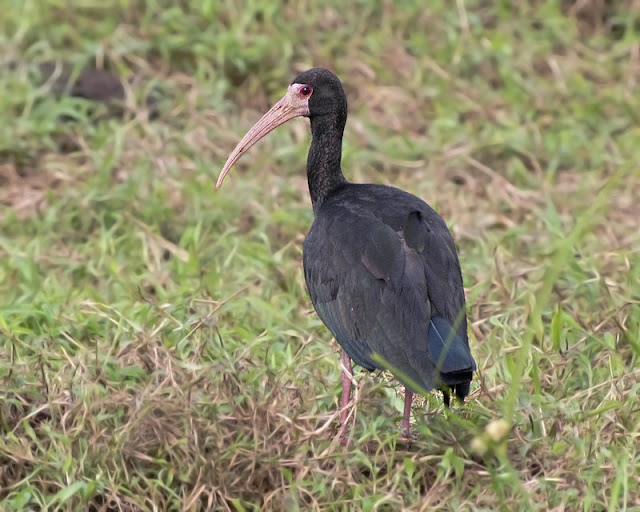Home Bird profile Unveiling the Enigmatic Bare-faced Ibis: A Comprehensive Exploration
Unveiling the Enigmatic Bare-faced Ibis: A Comprehensive Exploration
Bird Of The World February 19, 2024 0
The Bare-faced Ibis, also known as the Whispering Ibis, stands as an intriguing bird species that captivates bird enthusiasts and researchers alike. In this article, we delve into the unique characteristics, habitat, behavior, and conservation status of the Bare-faced Ibis, shedding light on this remarkable avian species.
Understanding the Bare-faced Ibis:
The Bare-faced Ibis, scientifically identified as Phimosus infuscatus, belongs to the ibis family and is native to the wetlands of South America. Recognizable by its distinctive bare facial skin and elongated bill, this bird species holds a distinctive place in the avian kingdom.
Key Characteristics:
The plumage of the Bare-faced Ibis showcases a mesmerizing blend of iridescent hues, making it a visually striking presence in its habitat. Its bare facial skin, devoid of feathers, adds a unique touch to its appearance. The long, slender bill aids in foraging, as the ibis seeks out its preferred diet of aquatic invertebrates and small vertebrates.
Habitat and Geographic Range:
Bare-faced Ibises are primarily found in freshwater wetlands, marshes, and lagoons throughout South America. Their range extends from Venezuela to northern Argentina, encompassing diverse ecosystems that include the Amazon rainforest, the Pantanal, and the Guianas.
Behavior and Social Structure:
These ibises are known for their social behavior, often congregating in large flocks. Their vocalizations, characterized as soft whispers, contribute to the nickname "Whispering Ibis." The Bare-faced Ibis is a skilled forager, using its bill to probe mud and shallow waters for prey. During the breeding season, these birds form monogamous pairs, engaging in intricate courtship displays.
Conservation Status:
Despite their adaptability, the Bare-faced Ibis faces challenges due to habitat loss and degradation. Conservation efforts are crucial to safeguard their wetland habitats and ensure the long-term survival of this species. Collaborative initiatives involving local communities, governments, and conservation organizations play a pivotal role in protecting the Bare-faced Ibis and its ecosystems.
 |
The Bare-faced Ibis emerges as a symbol of the rich biodiversity found in South American wetlands. By understanding its unique characteristics, habitat, and behavior, we can actively contribute to the conservation of this fascinating avian species and the ecosystems it inhabits. As we navigate the intricate world of the Bare-faced Ibis, let us strive to ensure a harmonious coexistence between nature and humanity.






Post a Comment